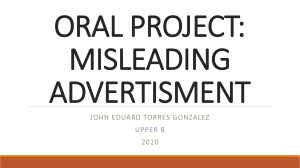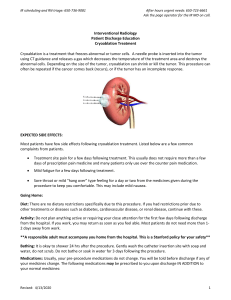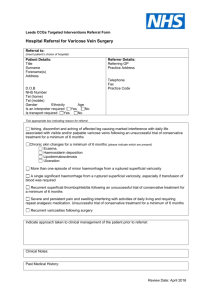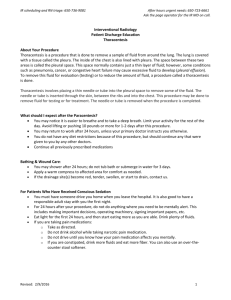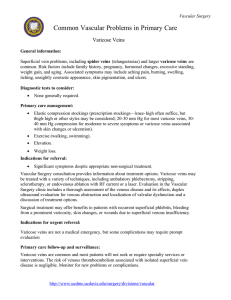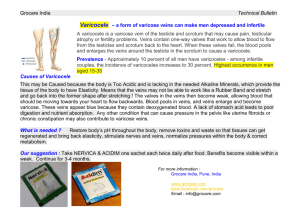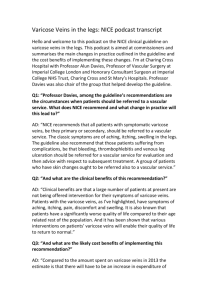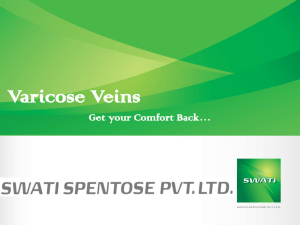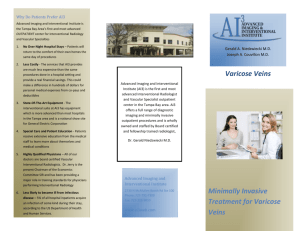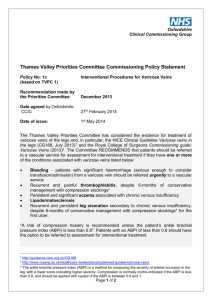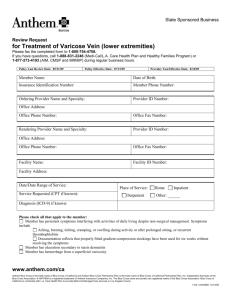Vein Ablation Patient Discharge Education
advertisement
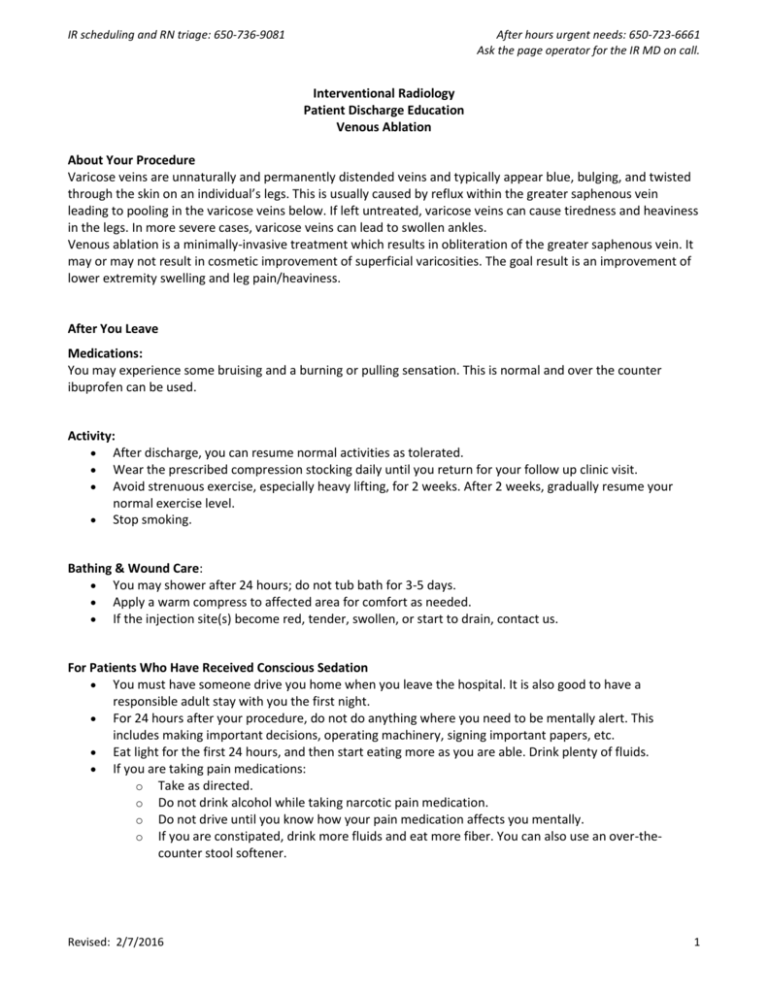
IR scheduling and RN triage: 650-736-9081 After hours urgent needs: 650-723-6661 Ask the page operator for the IR MD on call. Interventional Radiology Patient Discharge Education Venous Ablation About Your Procedure Varicose veins are unnaturally and permanently distended veins and typically appear blue, bulging, and twisted through the skin on an individual’s legs. This is usually caused by reflux within the greater saphenous vein leading to pooling in the varicose veins below. If left untreated, varicose veins can cause tiredness and heaviness in the legs. In more severe cases, varicose veins can lead to swollen ankles. Venous ablation is a minimally-invasive treatment which results in obliteration of the greater saphenous vein. It may or may not result in cosmetic improvement of superficial varicosities. The goal result is an improvement of lower extremity swelling and leg pain/heaviness. After You Leave Medications: You may experience some bruising and a burning or pulling sensation. This is normal and over the counter ibuprofen can be used. Activity: After discharge, you can resume normal activities as tolerated. Wear the prescribed compression stocking daily until you return for your follow up clinic visit. Avoid strenuous exercise, especially heavy lifting, for 2 weeks. After 2 weeks, gradually resume your normal exercise level. Stop smoking. Bathing & Wound Care: You may shower after 24 hours; do not tub bath for 3-5 days. Apply a warm compress to affected area for comfort as needed. If the injection site(s) become red, tender, swollen, or start to drain, contact us. For Patients Who Have Received Conscious Sedation You must have someone drive you home when you leave the hospital. It is also good to have a responsible adult stay with you the first night. For 24 hours after your procedure, do not do anything where you need to be mentally alert. This includes making important decisions, operating machinery, signing important papers, etc. Eat light for the first 24 hours, and then start eating more as you are able. Drink plenty of fluids. If you are taking pain medications: o Take as directed. o Do not drink alcohol while taking narcotic pain medication. o Do not drive until you know how your pain medication affects you mentally. o If you are constipated, drink more fluids and eat more fiber. You can also use an over-thecounter stool softener. Revised: 2/7/2016 1 IR scheduling and RN triage: 650-736-9081 After hours urgent needs: 650-723-6661 Ask the page operator for the IR MD on call. Follow-up visit information Call the Interventional Radiology Clinic in the Vascular Center at (650) 723-3893 for a follow-up appointment. This is typically scheduled 4 weeks following treatment. When to Get Medical and Emergency Help: Call our RN triage line at 650-736-9081: Any sudden onset of pain, decreased sensation, discoloration and coldness of the foot or leg. New fever, chills, or sweats within a week of the procedure. Increasing redness, swelling or drainage from the incision site. Increasing pain not relieved by medication. Increased swelling of the foot or ankle Go to your nearest Emergency Room: If your catheter site starts bleeding and will not stop after 10 minutes of firm pressure You have shaking chills or a temperature over 102°F Interventional Radiology Contact Information Office Hours 8:00 am - 4:30 pm Post procedure questions and RN Triage: Phone: 650-736-9081 Fax: 650-736-7734 Email: irprocedure@stanfordmed.org – non urgent concerns only Clinic Phone: 650-723-3893 Fax: 650-725-0533 Email: irclinic@stanfordmed.org – non urgent appointment requests only For all After Hours Urgent/Emergent issues: Call the Stanford Page Operator: 650-723-6661 Ask for the IR MD ON Call (pager # 27237) Revised: 2/7/2016 2
